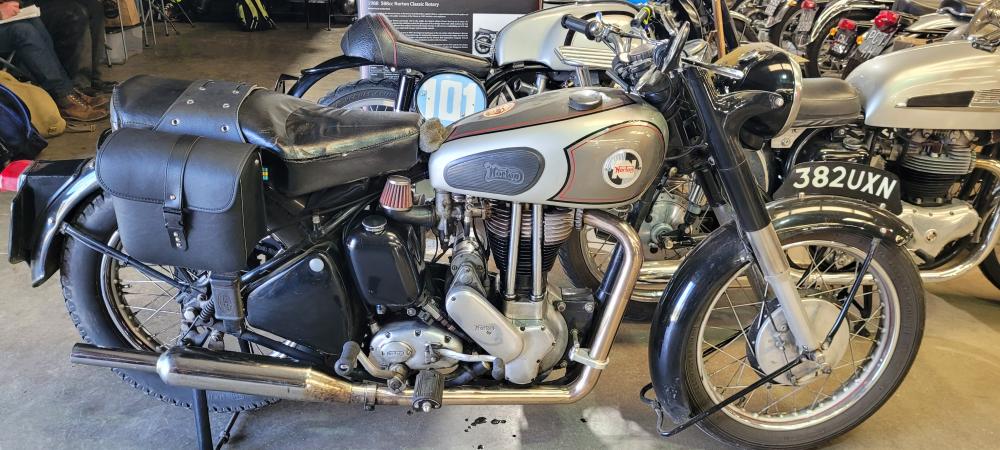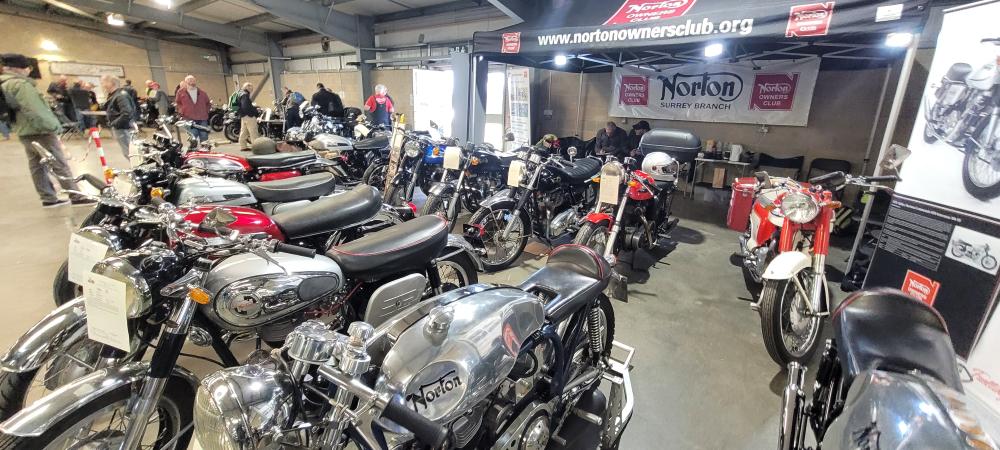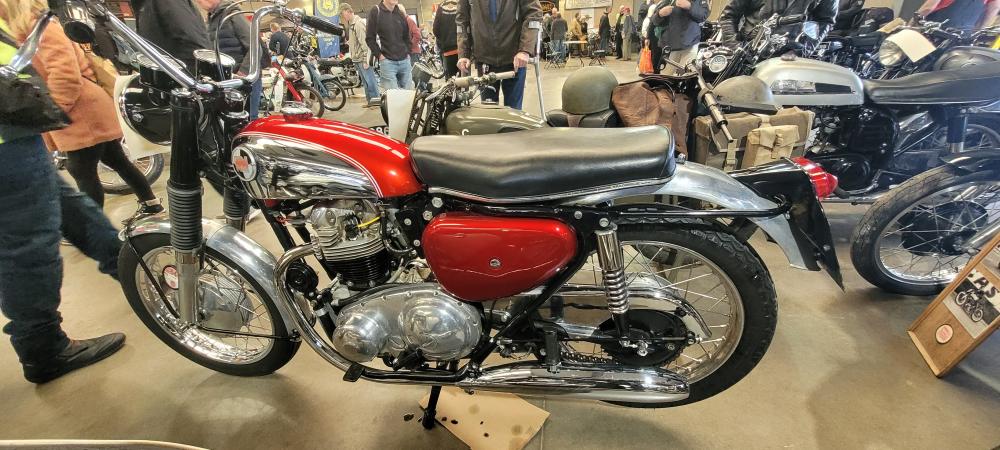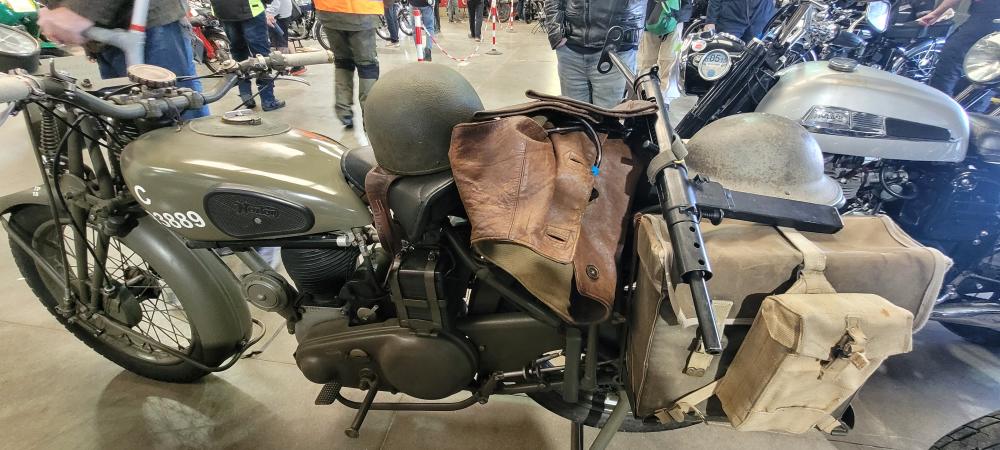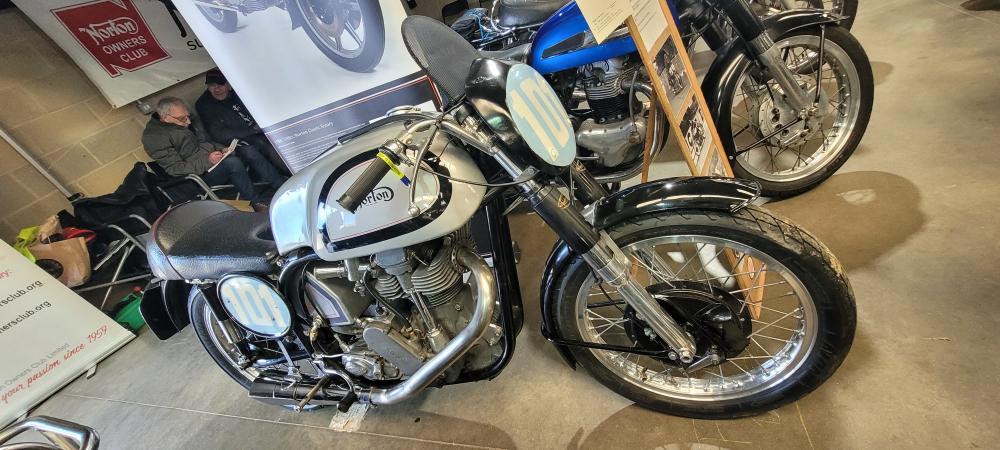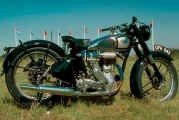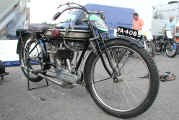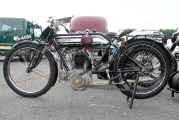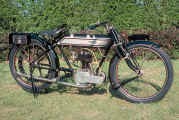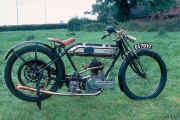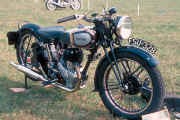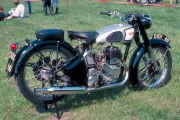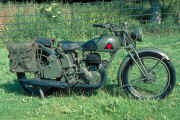Norton Side Valve engined bikes from 1908 to 1954
Big 4
633cc SV 1908 - 1947
596cc SV 1948 - 1954
|
This model (Model 1) was launched in 1908, and was the first Norton machine to incorporate a Norton manufactured engine, previous ones having been bought in from other sources such as Peugeot. The engine was a side-valve one, with a characteristic cylindrical silencer which lay across the front of the engine. |
Model 16H490cc SV 1921 - 1954
|
||||||
|
||||||
|
Very similar to the Big 4 but with a smaller engine based on the already traditional Norton dimensions of 79mm x 100mm. Initially, owners had to file the valve stems in order to obtain the correct tappet clearance, but in 1922 adjusters were fitted. |
||||||
|
The flat tank was replaced in 1929 by a saddle tank and over the years there were several frame changes. For 1932, the exhaust pipe changed position to the right hand side and in 1935, a four speed gearbox was fitted, which had already been on some other Norton models for several years. |
||||||
|
The colour of the paintwork depended on the branch of the services that the machine belonged to, dark blue for the Navy, light blue for the RAF, and olive green or khaki camouflage for the Army. Ex-WD 16Hs were resprayed and sold after the war to civilians and many were used with sidecars. Girder forks were retained through to 1947, when the new models had some design changes, including Roadholder forks, new valve gear and an alloy cylinder head but still without a head steady. |

